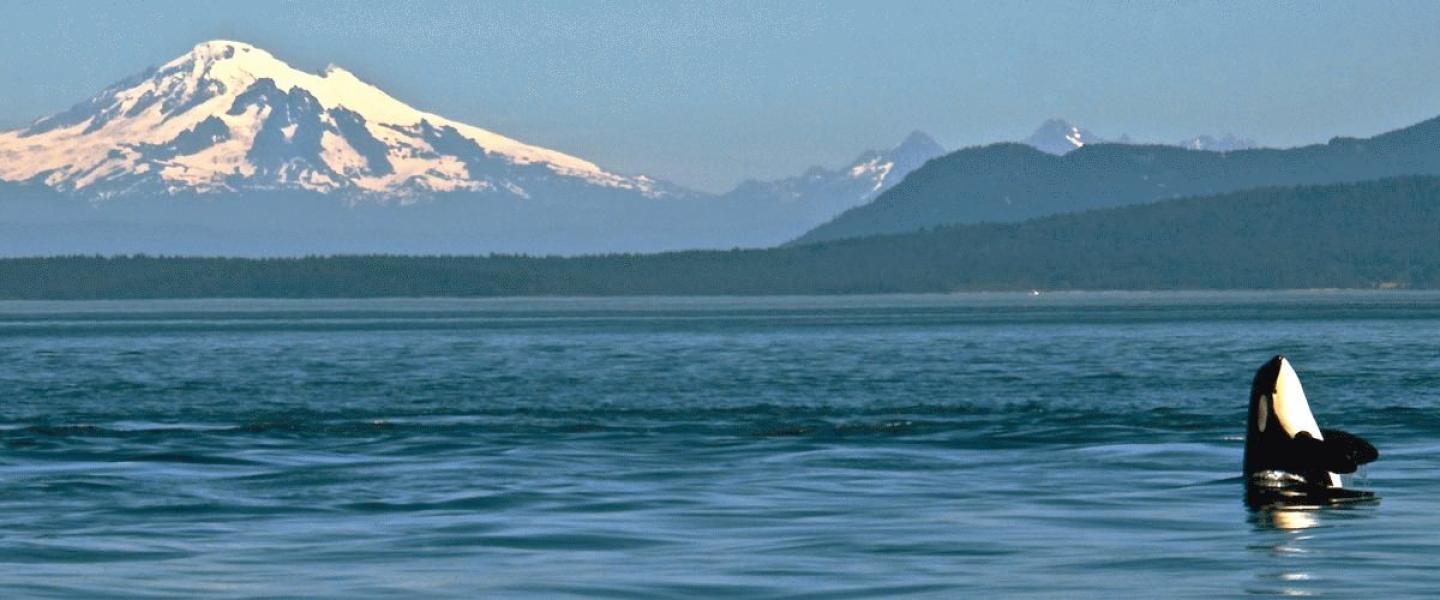
When it comes to orca mating, researchers do not know how the pairs are established. Mating is indiscriminate, meaning that males and females do not stay together. Females raise the calf with their family and the males help to raise their siblings, cousins, etc. It has even been theorized that the matriarch has some say in who will pair with whom and when. Talk about a nosy in-law.
If the matriarchs do not condone, or even establish, when the mating will take place, and we know that males do not appear to fight for breeding rights, then in what manner are the pairs formed? We do not hear singing like with the humpbacks. There are no pitched battles like with narwhals. Orcas are pack hunters and share their food, so being a good hunter/gatherer seems an unlikely means of conquest. What is left? Well, male orcas have very tall, straight dorsal fins that do not resemble the ones that females have. Maybe that is what is used to determine a male's virility or health. Researchers have assumed that the big old male, J1 "Ruffles", fathered large numbers of offspring simply because there were so few adult males available. What if the real reason was the big, wavy dorsal fin that he carries around. I know one or two naturalists who think it is sexy, why not the lady orcas as well? And now that L41 "Mega" is so grown-up, maybe he will become the top breeder and J1 "Ruffles" can enjoy his twilight years in peace.
If the size or shape or turn of the male's dorsal fin is what decides the case, then the transient orca that we spent the day with must be very popular. It was actually a group of four transient orcas and the one male in the pod, T169, has a dorsal fin that is so wide and heavy it actually hangs to the side making it look curved. He runs with his sister, T168, and her two female calves, T168A and T168B. These four were spotted earlier this season and were maybe the animals that we saw at the start of this week in an area where resident orcas were feeding. As amazing as that encounter was, the really interesting thing about these orcas is that researchers could not be sure that they were actually transients until they ran DNA tests on them. This family does not interact with other transients and while they have very heavy dorsal fins, they are shaped more like those of the resident community; very rounded at the tip. It made for fascinating contemplation out on the water today.
So, from all of us at San Juan Safaris, to all of you big and tall lovers out there, thank you and we will...
See You In The Islands!
~Tristen, Naturalist